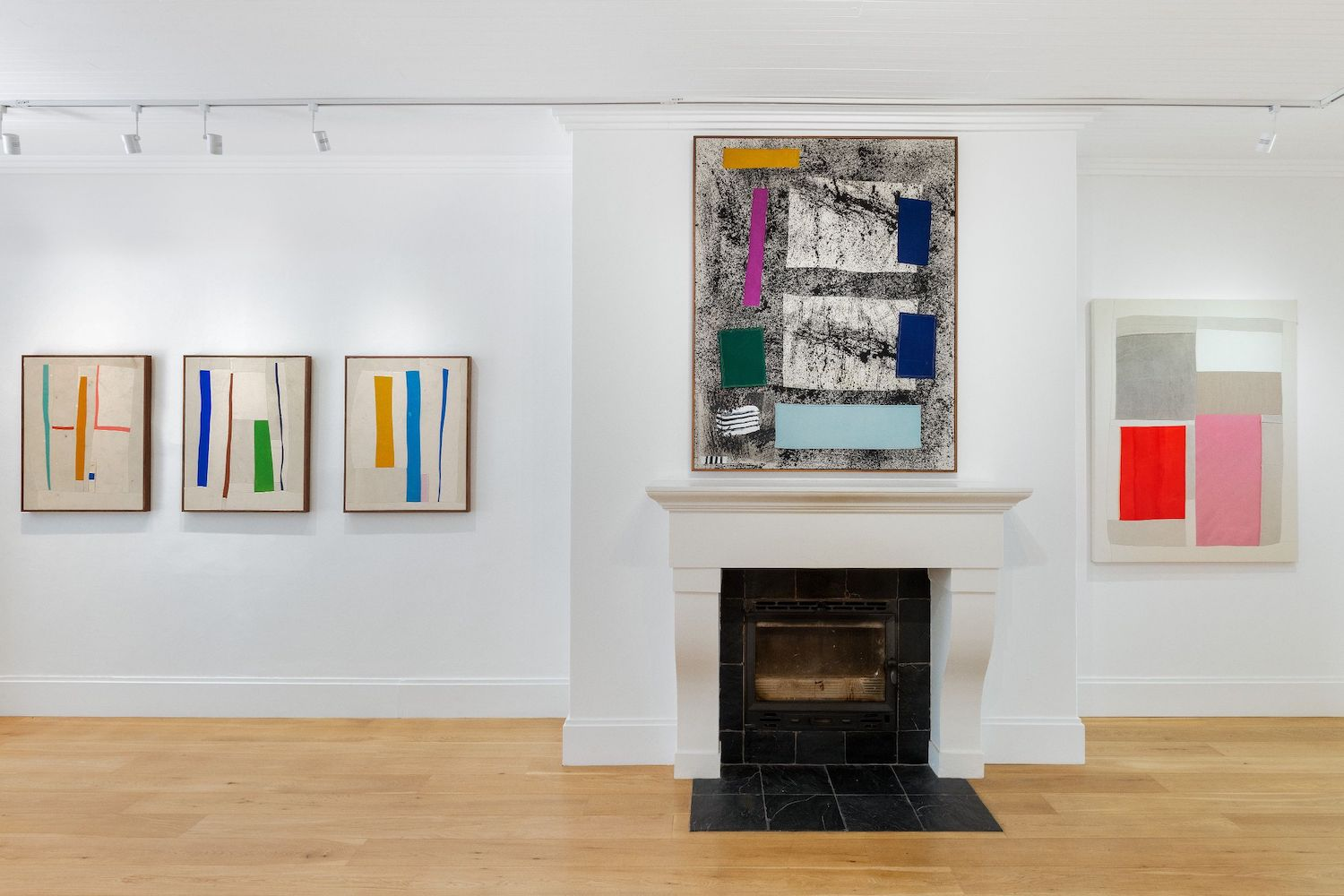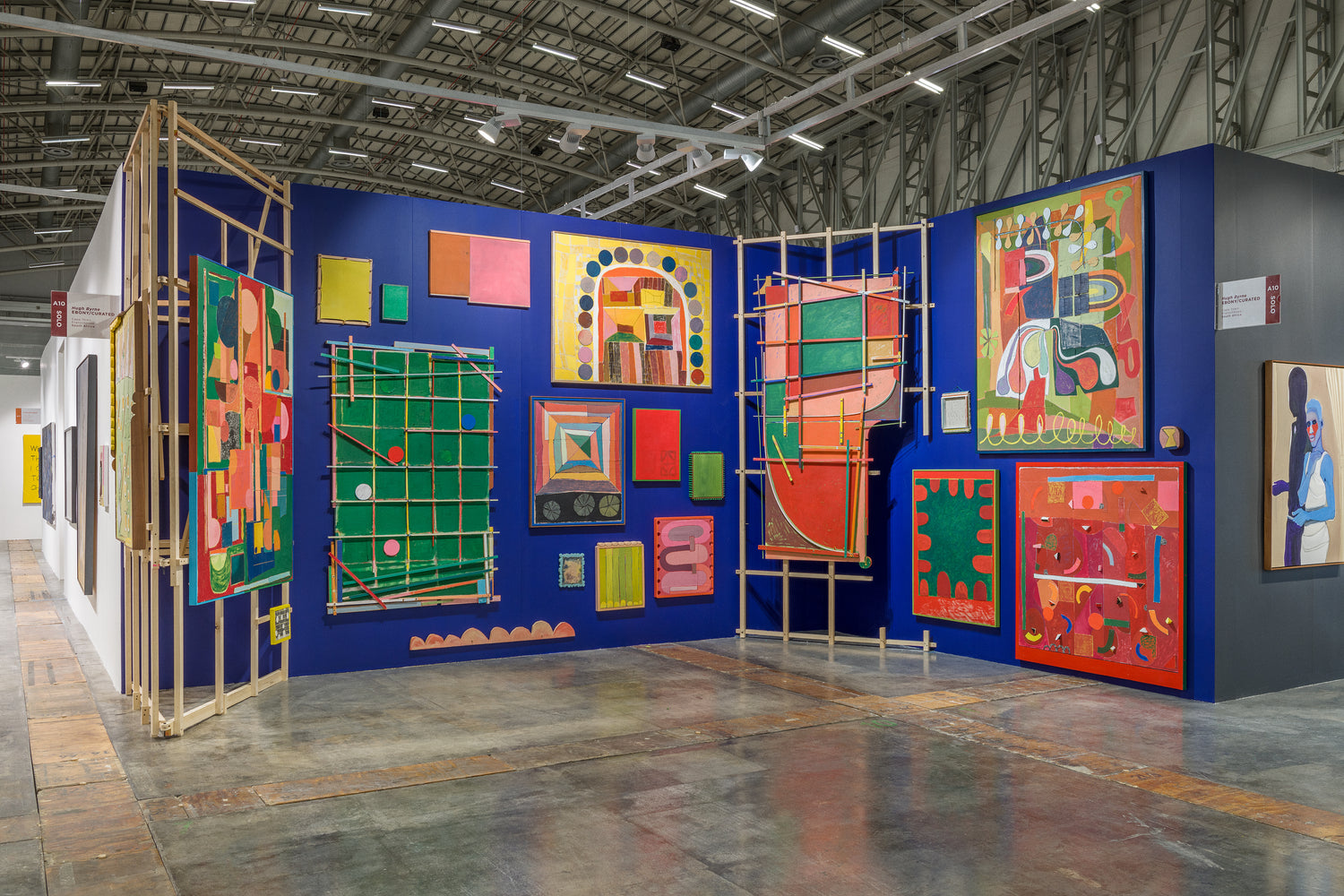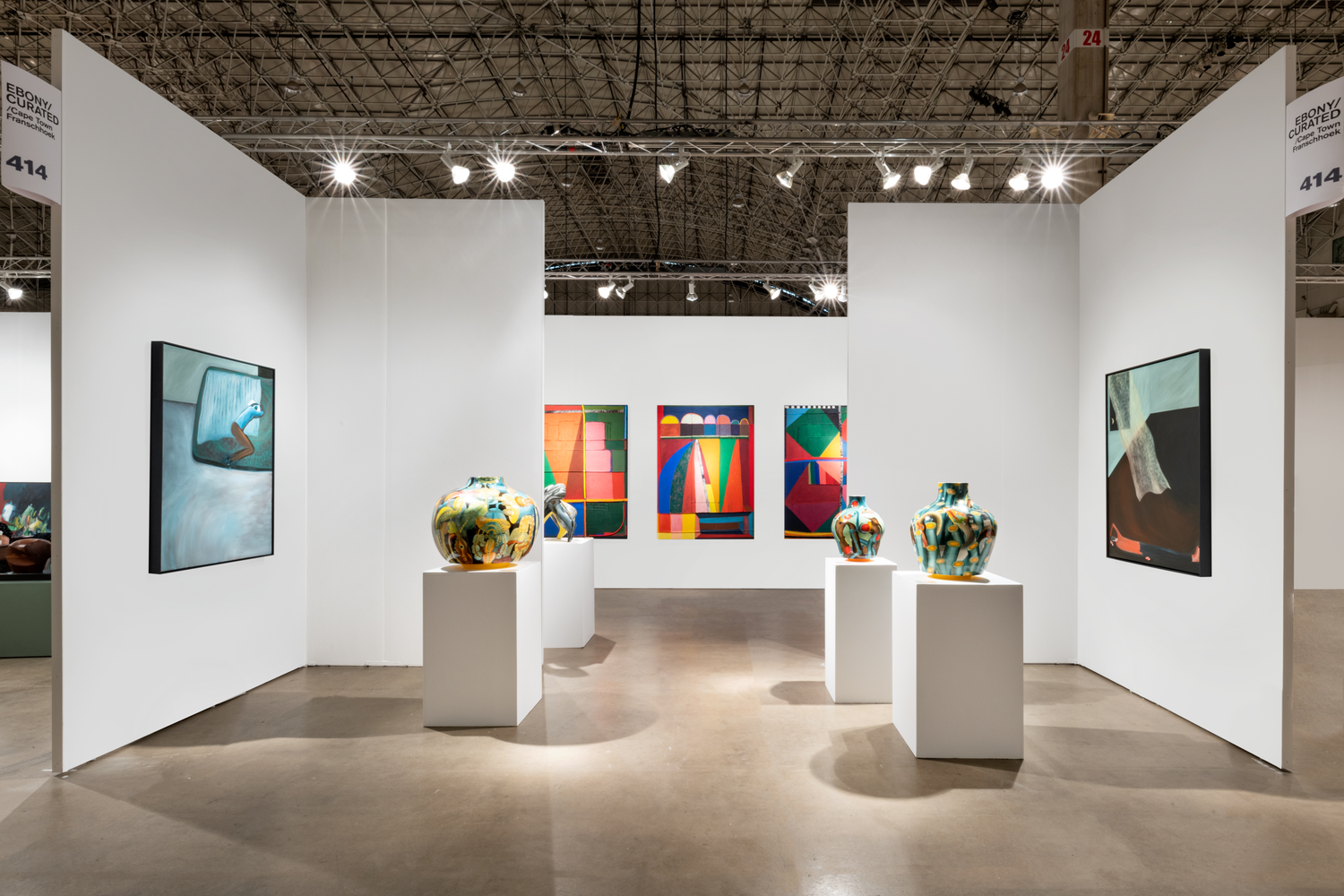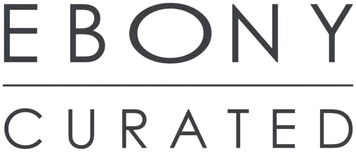In Chorus
Hugh Byrne
29.01.2020 - 29.02.2020
EBONY/CURATED, Loop Street
___
HUGH BYRNE’S JOURNEY Of RENEWAL AND INVENTION
- Sean O’Toole, 2020
In 2012, following a three-year stint in Taiwan, Hugh Byrne began exhibiting his paintings in earnest. Those early paintings – hard- edged abstractions featuring sharp, intersecting volumes of undifferentiated and flatly painted colour, largely rendered in cool tones of blue – announced his interest in colour and structure. Byrne’s sense of structure was primed by photography, a practice he devoted himself to with gusto while living abroad. His earliest paintings were in effect translations of his felicitous encounters with urban spaces dominated by vertical architecture and intersecting spatial volumes. The city, Byrne explained in a 2013 interview, has
a way of “combining unrelated objects together to create scenes, which are only there for a brief moment. for example, a shadow falling across a moving bus or the reflection of telephone lines in an office block window.”
Colour and structure are divisible as ideas but in Byrne’s paintings they are also joyously enmeshed: colour is structure. This is true throughout his inventive body of work. In his earlier works, Byrne often painted with a mapmaker’s sense of boundaries. So he stacked his colours like blocks or overlapped them as if making a collage, but he never caused them to mingle. The boundary prevailed. To a degree this method and understanding persists in his new work. Over time, though, Byrne has allowed himself to paint in a looser and messier style. It began to suggest itself in his camouflage-like paintings from 2017, which were an advance on his earlier trompe l’œil series Orientation (2016). By the time Byrne started working on his form Sequence series (2018), compositions featuring overlaid skins of colour and visible patterning from brushwork, his old faith in sharp lines and absolute divisions of colour had yielded. Painting is a perpetual apprenticeship, one that involves both learning and unlearning. Byrne’s new suite of paintings in his exhibition In Chorus continues his formal investigation of colour and structure, but introduces a new material enquiry. The surfaces of his paintings feature either stitched or glued pieces of previously used canvas retrieved from his studio. Each painting is in effect a palimpsest of his former practice, onto which Byrne has overlaid his familiar, albeit still-evolving iconography of solid forms. These new works are distillations of a process, perhaps even compromises of a sort. In Chorus included a display of radical studio experiments, among them cut up canvases that make Lucio Fontana’s incised canvases seem tame, juxtaposed against Rothko-esque colourfields crafted from sundered bits of studio detritus.
Two works chart the distance Byrne has travelled as a painter since 2012. GeoCity 4
(2012) typifies the artist’s early interest in translating the experience of landscape into an abstract language of colour. Flatly painted, his line work aided by the use of tape, this early geometric abstraction resembles the dazzle camouflage used by wartime navies a century ago to obscure ships. Punch (2019), one of the largest compositions featured in In Chorus, sees Byrne return to blue. Punch depicts five white rectangular bars (they resemble the white fluorescent lights in a Dan Flavin installation) and red circle contrasted against a void of light blue. The composition, which was made with oil and acrylic paint, oil bar, sand and marble dust, covers a ground built up of irregular pieces of used canvas pasted onto stretched canvas.
Punch would easily sit alongside the mystical, hard-edged abstractions produced by Douglas Portway, a key figure in the history of post-war abstract painting in South Africa. Byrne’s earlier paintings also invite favourable comparison with another South African, Eric laubscher, as well as the Nigerian-American Odili Donald Odita and lebanese-American Etel Adnan. The vigorous materialism of his new work points in the direction of Italian artist Alberto Burri. And so on. Comparisons are best understood as prompts to think relationally. Byrne’s energetic painting practice, which quotes from masters past and present, also discovers and innovates as it goes along. This encapsulates the story of abstract painting too. Painters repeat and reiterate the past, all in service of renewal and invention.
Sean O’Toole is a writer and art critic base in Cape Town. He is a contributing editor to frieze magazine (london/USA).
Artist Statement:
Progress through exploration and discovery continues to be important in my work. Revisiting and recycling earlier, sometimes abandoned, painterly experiments has been central to the development of the works collected in this exhibition. They are the products of a constant process of creation, destruction, appropriation and rediscovery which ultimately trouble, and even collapse, the divisions between ‘painting’ and ‘object’.
I realised how important the studio space as an influence on my work is. Left over material which had accumulated (including old frames, loosened canvas paintings and other studio by-products) presented not only a vantage point from which to start anew, but also materials that could be added to works in progress, offering solutions to formal problems and creating interesting textures and forms. In my earlier work, I relied heavily on tape to bring together different areas of interest to deliberately achieve harmony/disharmony. For In Chorus, however, the process of adding canvas to canvas demanded an act of suturing, either by means of glue or needlework. Working in such a highly tactile mode is conceptually interesting to me, since it implies that the canvas is not merely a means to an end, but a malleable object in its own right. This approach results in the frayed edges, visible sewing thread and other imperfections which emphasise the materiality of the work, with its rich assemblage of oils, acrylics, collage, glue, sand, marble dust and all manner of bric-a-brac found in the studio.











